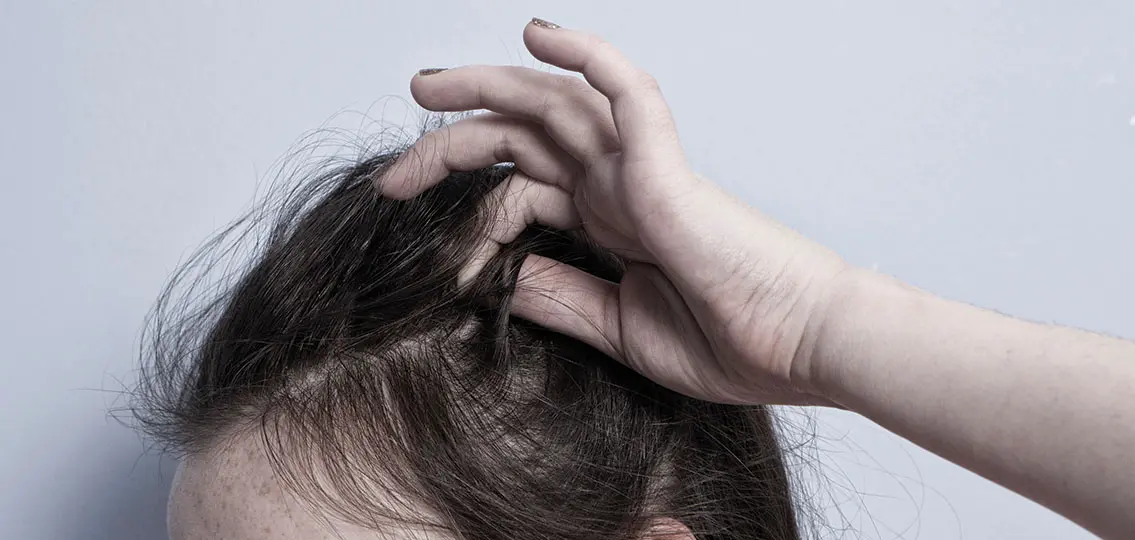Trichotillomania, or hair-pulling disorder, is not an uncommon childhood condition, and it can cause much confusion and unrest within families. What should parents do if they notice their child pulling? To seek some advice, Your Teen spoke to Dr. Suzanne Mouton-Odum, Ph.D., a psychologist in Houston and the co-author of A Parent’s Guide to Hair-Pulling Disorder.

Q: What is Trichotillomania and how common is it?
Mouton-Odum: Somewhere between 2.5 to 5 percent of the American population experience recurrent hair-pulling disorder. Typically, the onset of the disorder is between 11 and 13 years of age. I have seen some babies as young as 6 months old, as well as patients who are in their 40s or 50s. Hair pulling is one of a cluster of behaviors known as BFRBs (body-focused repetitive behaviors), which is an umbrella term for a number of repetitive, problematic behaviors that include hair pulling, skin picking, eyelash or eyebrow pulling, lip biting, nail biting, cuticle biting, acne excoriation, and knuckle cracking.
Q: Do boys and girls both hair pull?
Mouton-Odum: Under the age of 12 years old, this behavior is 50/50 boys and girls. Over age 12, it is 90 percent female. We don’t know exactly why there is such pronounced gender differentiation after puberty.
Q: Is there any connection between puberty and the onset of hair pulling?
Mouton-Odum: Some researchers believe that at this age, because the body is teeming with hormones that affect mood, these behaviors can be triggered. Many psychiatric issues begin at this age, and we are not really sure why one person will develop hair-pulling while another does not. There seems to be a genetic component as well, as someone with a BFRB has a higher likelihood of having a relative in their immediate family with these repetitive behaviors.
Q: Is hair pulling linked with anxiety or depression?
Mouton-Odum: Parents worry when they see these behaviors—what does it mean? Is my child anxious? Is there a link with suicidality, self-mutilation, or eating disorders? They’re terrified when they see missing hair or bald spots. What we do know is that most people who engage in a BFRB are pretty psychologically healthy. Hair pulling does not predict anything in the future or tell us anything about a person’s past. For many individuals this is a self-soothing behavior that calms their nervous system, and we need to help these kids find healthier ways to soothe themselves.
Q: What signs should parents be looking for?
Mouton-Odum: Hair pulling tends to be a private behavior. Some parents never see it happen, and they only notice a bald patch or missing eyelashes. Your child may be evasive or unable to explain what happened. They may be uncomfortable talking about it, or they might cry. Pulling is not something they do to cause trouble. It is a soothing, calming behavior, possibly a sensory release that feels good. Your child may not be able to tell you why it feels good, but for some reason it is calming.
Q: How should parents respond?
Mouton-Odum: I always tell parents they need to be like a pillow for their kids: soft, supportive, full of love and comfort. The more parents push and nag, the more children feel terrible. If you say “Why did you pull out your eyelashes? They were so long and pretty!” what your child likely hears is “You don’t look pretty now.” A lot of the therapy we do is actually working with parents to help them to preserve their child’s self-esteem at an age where it’s already pretty fragile. Love, support, and finding resources for your child is a better approach than judgment, negativity, and blame.
Q: Can kids outgrow pulling?
Mouton-Odum: Some adults will acknowledge that they struggled with a BFRB when they were kids. No one knew back then what these behaviors were. Adults will say “I just quit doing it” or “I made myself stop.” Some will continue with these behaviors into adulthood and some will seek treatment as adults. I compare it to quitting smoking: For some, it’s a struggle every day and they have a hard time tolerating the urge. Others are able to successfully put the behavior in the past, but it requires some hard work and willingness to participate in therapy.
Q: What advice do you have for parents?
Mouton-Odum: Be careful not to make hair pulling or other BFRBs the focus of your family life. Sometimes doing nothing at all is the right thing to do. Do your best to be supportive, but make hair pulling a non-issue. The more you can preserve your child’s confidence and self-esteem, the better off your child is going to be. If your child wants treatment, then educate yourself and find a therapist trained in treating hair pulling. An untrained therapist can misinform and/or misguide treatment. I always recommend parents visit the TLC Foundation for Body-Focused Repetitive Behaviors website (www.BFRB.org). This is an excellent resource and support network both for patients and for parents. The site also has a referral network to help find comprehensive behavioral treatment from therapists who are trained to treat this disorder.

Parents tend to panic and try to control this behavior, which usually backfires. A better approach is to support your child, accept this behavior, and move toward getting help—if they are asking for help. Parents did not cause this behavior, but they are a part of the solution. Love, support, and acceptance are key ingredients in successful parenting, no matter what your child is struggling with. Be patient, educate yourself, and help your child to love herself through all of the struggles of teenage years.




